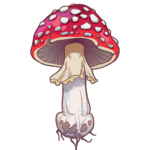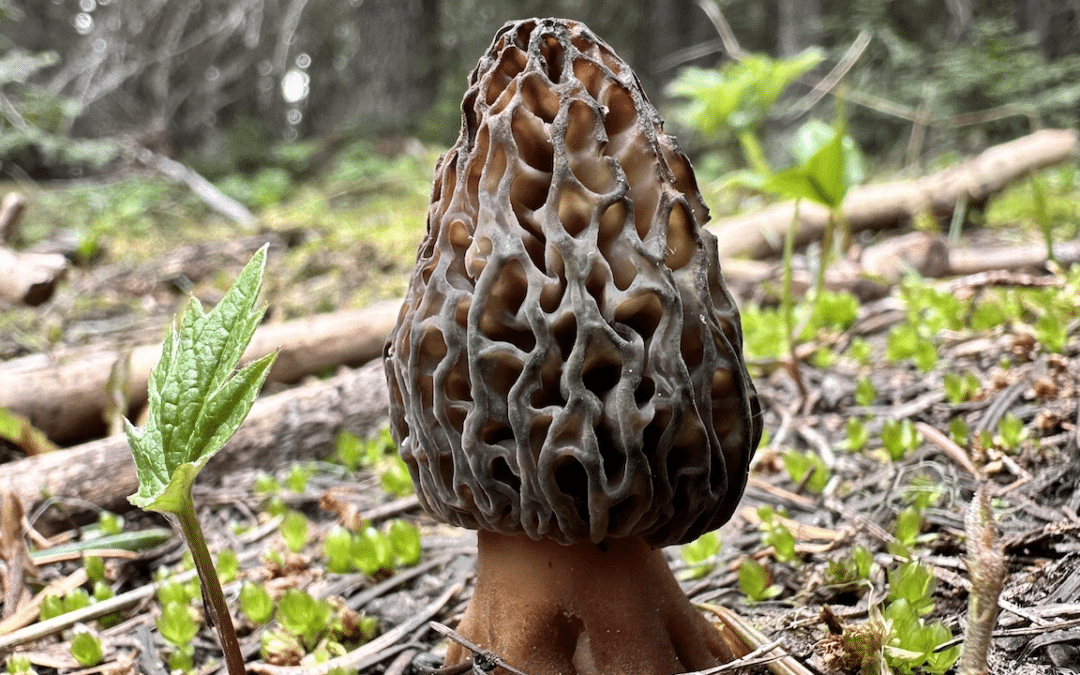Cleaning dirt, sand, and bugs from mushrooms is a common challenge for foragers. Here are some tips for reducing the amount of these that make their way into your cooking
Clean Mushrooms As You Pick
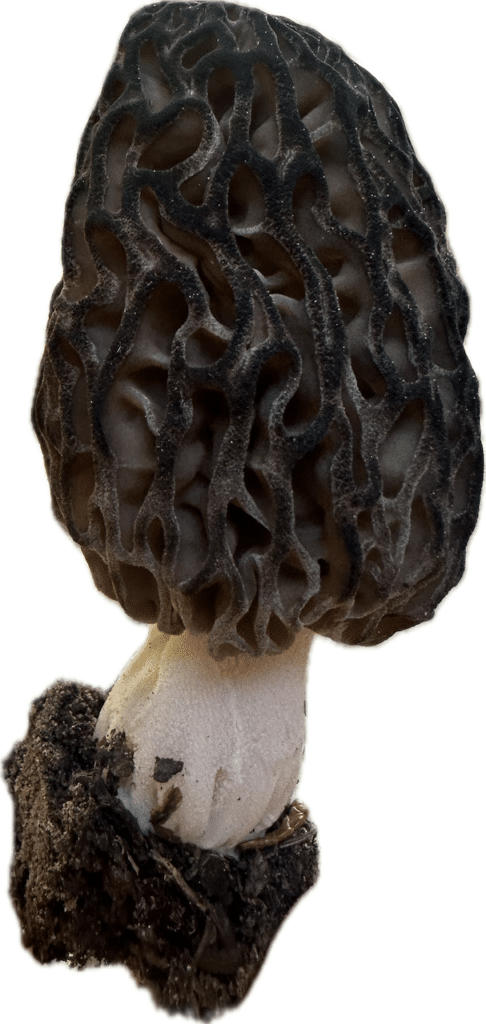
One key characteristic of morels is their honeycomb pockets. Unfortunately, these are also a great place for dirt to collect and can be extremely challenging to clean. Limiting the dirt that makes it into your bag is one of the easiest ways to keep mushrooms clean. Always cut off dirty stems before putting them in your bag. Dirt left at the base of your mushrooms will easily break off and find its way onto otherwise clean mushrooms.
Cutting mushrooms from the ground is an excellent way to keep mushrooms clean. Some claim that pulling mushrooms out of the soil harms the underlying organism but there isn’t any evidence to support this. Picking mushrooms from the soil is likly as harmless to the underlying fungal organism as picking fruit from a tree, or a flower from a plant.
Leave Heavily Infested Mushrooms In The Forest
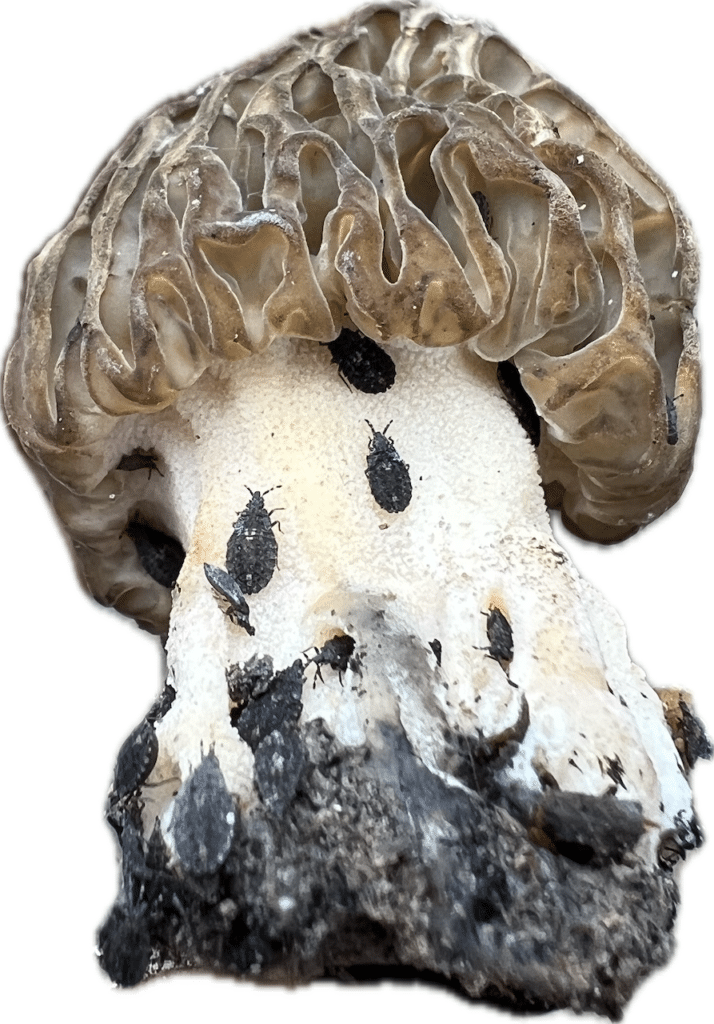
A quick visual inspection is often adequate for recognizing mushrooms that are better left in the forest. Typically heavily infested mushrooms will have started to rot and can be a vector for further contamination of other prime mushrooms. Typically you will find insects inside the inner chamber of morels. If you notice a large amount of insect or larvae inside of a mushroom, consider leaving that one in the forest.
Dry Cleaning (Method 1)
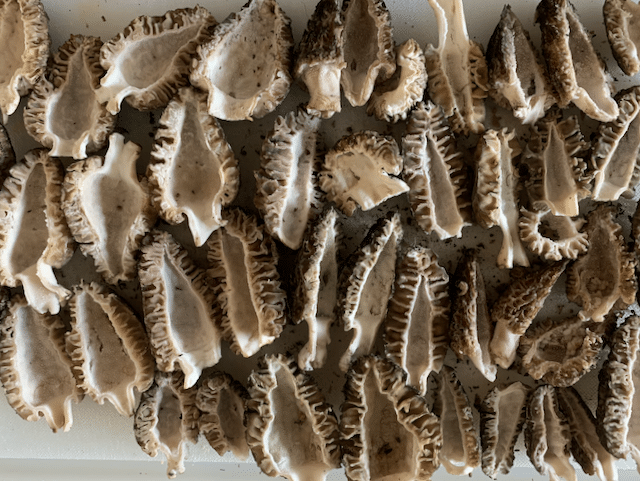
1. Brush Off Dirt: Use a soft mushroom brush or a soft-bristled toothbrush to gently brush off any dirt and debris from the mushrooms. Avoid using water at this stage to prevent the mushrooms from becoming soggy.
2. Cut and Inspect: Slice the morels in half lengthwise to expose the insides. Check for any dirt, grit, or larvae.
Saltwater Bath (Method 2)
Morels can handle water better than many other species.
1. Prepare a Saltwater Solution: Mix about 1 tablespoon of salt per quart of cold water in a large bowl.
2. Soak the Mushrooms: Submerge the morels in the saltwater solution and let them soak for about 10-15 minutes. The saltwater helps to dislodge any larvae or insects hiding inside the mushrooms.
3. Agitate Gently: Swirl the mushrooms gently in the solution to help loosen any dirt and larvae.
4. Rinse and Drain: After soaking, remove the morels from the saltwater and rinse them thoroughly under cold running water to remove any remaining salt and dirt.
5. Dry on Paper Towels: Place the cleaned mushrooms on paper towels and pat them dry.
Simple Water Rinse (Method 3)
1. Rinse Under Running Water: Hold each mushroom under cold running water and use your fingers or a soft brush to gently clean the surface.
2. Inspect and Cut: Cut the mushrooms in half lengthwise to inspect for any remaining dirt or larvae.
3. Dry Thoroughly: Lay the cleaned mushrooms on paper towels to dry before cooking.
Cooking Morels
It is important to always cook morels thoroughly before consuming. Many people report GI distress after eating cooked morels and some sensitive individuals may experience worse reactions. In 2023 there were 2 deaths and many illnesses reported in Bozeman, MT after restaurant patrons ate raw or undercooked morels.
If you have not eaten morels before, consider eating only a small amount your first time and waiting overnight before having a larger morel meal. This is a helpful strategy when eating any wild mushroom that is new to you
